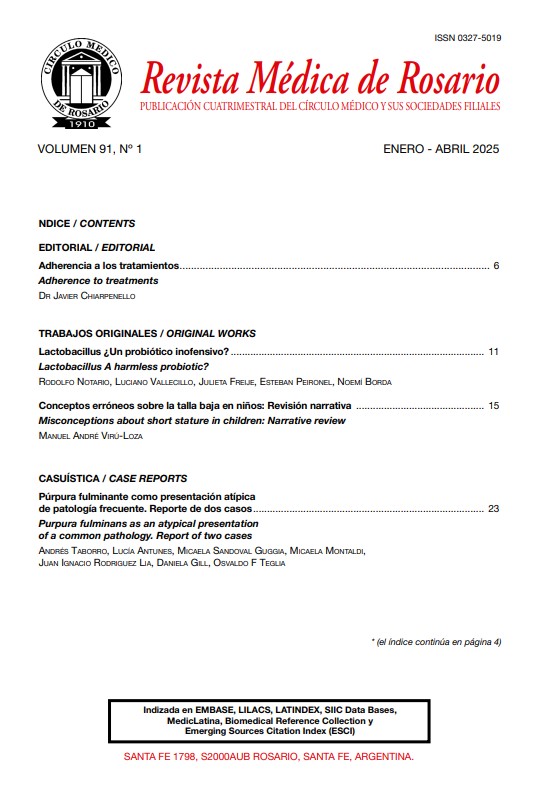CONCEPTOS ERRÓNEOS SOBRE LA TALLA BAJA EN NIÑOS: REVISIÓN NARRATIVA
Palabras clave:
estatura, crecimiento, enanismo, hormona de crecimientoResumen
Introducción: Existen muchos errores de interpretación de la evidencia científica con relación al crecimiento. Esta revisión pretende abordar varios de estos errores haciendo referencia a bibliografía científica. Puntos clave: No todos los instrumentos de medición de talla son válidos, los percentiles de talla no indican un solo valor ideal, para el cálculo del rango de talla genética no se suma y resta 5 cm a la talla genética, en los primeros años el percentil de talla puede caer fisiológicamente, no es útil medir la talla mensualmente, la velocidad de crecimiento no es mejor que los percentiles, el aumento de percentiles de talla no siempre es saludable, no siempre se requiere exámenes auxiliares para evaluar el crecimiento, la medición aislada de hormona de crecimiento no es útil, la malnutrición no es la causa más frecuente de talla baja, la genética es determinante en el crecimiento, ningún suplemento, ejercicio o tiempo de sueño han demostrado hacer crecer más de lo normal, y no es adecuado aplicar somatropina en niños sanos con talla normal. Conclusiones: Se debe tener en cuenta evidencia científica de calidad para dar recomendaciones a los padres de niños que son evaluados por sospecha de problemas de crecimiento.
Descargas
Publicado
Cómo citar
Número
Sección
Licencia
Derechos de autor 2025 Manuel André Virú-Loza

Esta obra está bajo una licencia internacional Creative Commons Atribución-CompartirIgual 4.0.
Licencia Atribución-CompartirIgual 4.0 Internacional (CC BY-SA 4.0)
https://creativecommons.org/licenses/by-sa/4.0/deed.es






